Laying Supply Lines Before LDH
July 1982
|
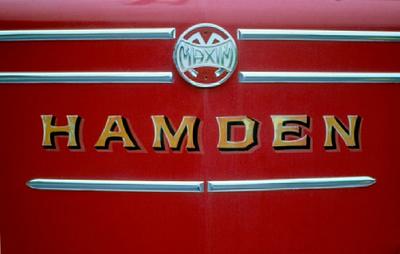 |
| Engine 4 - 1973 Maxim 1,000 GPM |
|
Before the department adopted large diameter hose (LDH) in 1986, Hamden's pumpers had split hose beds with 3" on one side and 2-1/2" on the other. Depending on the pumper, you could fit approximately 1,000 feet of each size in the hose beds - somewhat less on the Telesqurt.
In July 1982, then-Deputy Chief/Training Officer John Tramontano produced an in-house slide presentation demonstrating both forward and reverse methods of laying supply lines.
Long before home computers and PowerPoint presentations, Tramontano's slideshows permitted every one of the department's 120 line personnel to remain familiar with department procedures, especially during winter months when outdoor hands-on training was neither desirable nor practical.
|
The procedures demonstrated in the photos below were for an "in-line" forward lay.
As defined in the 1970s and 80s, "in-line" pumping was having water supply line(s) connected directly to the hydrant - unpumped - with the fireground pumper relying on hydrant pressure only. The rule of thumb for most areas of Hamden, except State Street, was that you were good for up to about 700 feet without a pumper at the hydrant.
|
Firefighters Bob Surprise and Don Buechele, on the tailboard of Engine 4, are preparing to pull 3" and 2-1/2" supply lines from the hose bed and wrap them around the hydrant.
Unless there were more than four on board, Hamden firefighters never rode the tailboards of apparatus equipped with jumpseats. But when performing this maneuver at least one firefighter usually rode the tailboard, but well out of the way of the exiting couplings.
When these photos were taken the only career pumpers with jumpseats were Engines 3, 4 and 6 (the spare). Engines 1, 2, 5 and 9 had only tailboards. But riding the tailboard was required only of firefighters on Engine 2, a 1968 Maxim. The other pumpers without jumpseats responded with only the driver and rider.
|
As seen in the photo, the 3" was loaded into the left-side hose bed with the male end sticking out at the bottom of the bed. The 3" female coupling up top was readily available for connection to the hydrant.
The 2-1/2" was loaded into the right-side hose bed with the male end connected to a 2-1/2" adjustable fog nozzle.
If needed, the 2-1/2" line could be pulled from the bed and connected to one of the discharge ports for a quick "blitz" attack on a fire too large for a conventional 1-1/2" or 1-3/4" handline.
And if the 3" supply line was too short to reach the fire scene, a double female permitted the 2-1/2" line to be connected to the male end of the 3" load, extending the lay by up to 1,000 feet. (Such a lay, of course, would have to be pumped from a hydrant.)
|
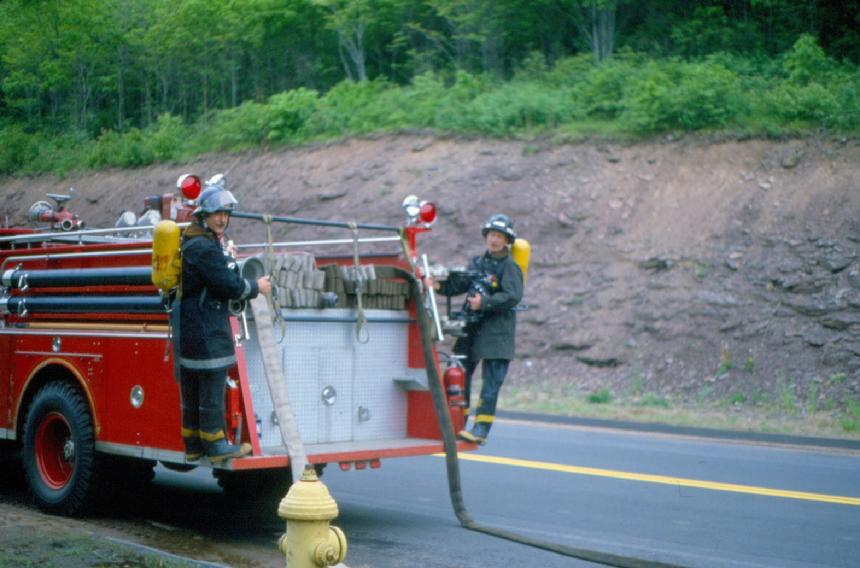 |
| After signaling the driver, both firefighters stayed well clear of the couplings as the hose is pulled from the bed. |
|
|
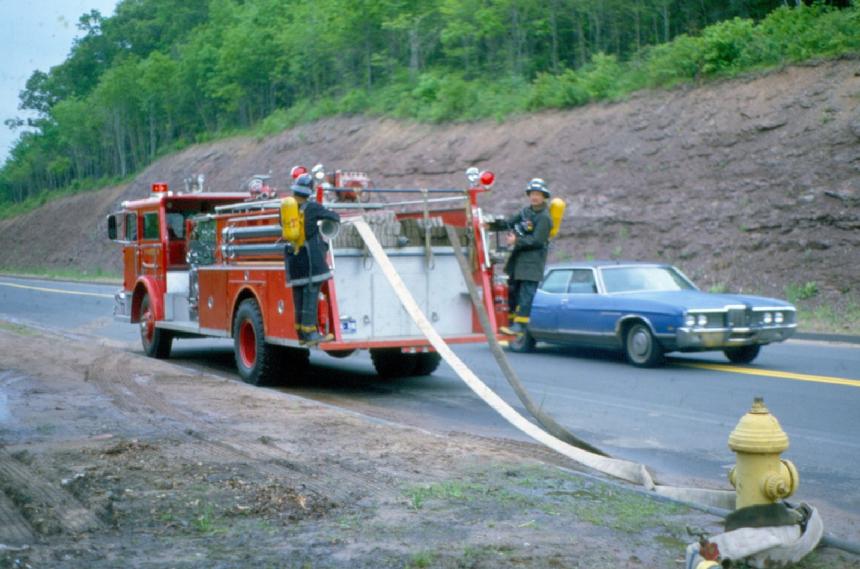 |
| This will be an "in-line" lay directly off the hydrant. No pumper at hydrant required. |
|
|
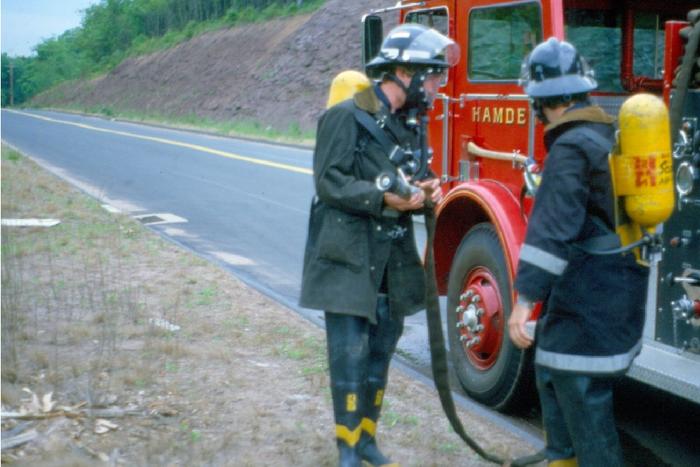 |
| Attack crew removes 1-1/2" from crosslay. |
|
|
 |
| Ffs. Surprise and Buechelle advance their uncharged 1-1/2" attack line. |
|
|
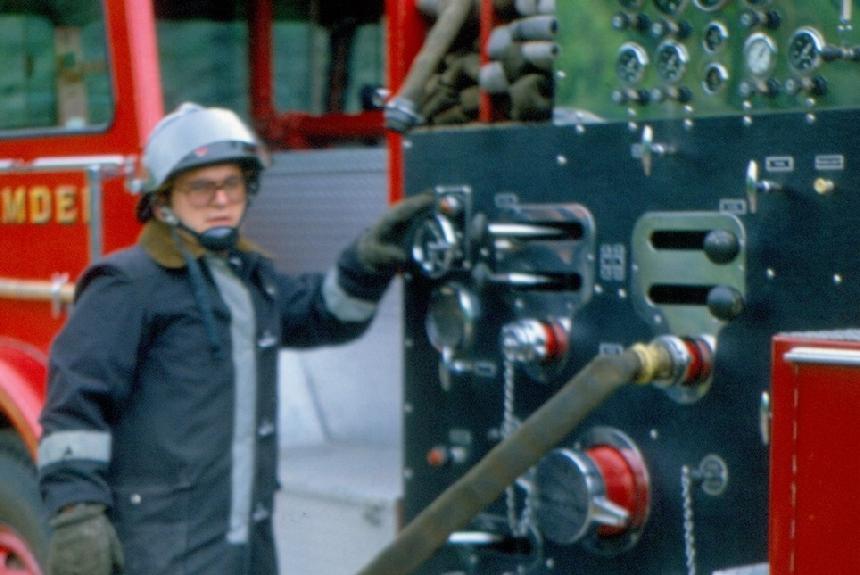 |
| Pump operator, Ff. John Longo, connects and then charges 1-1/2" attack line with tank water. |
|
|
 |
| He then removes hose clamp from bracket on driver's side of pumper . . . |
|
|
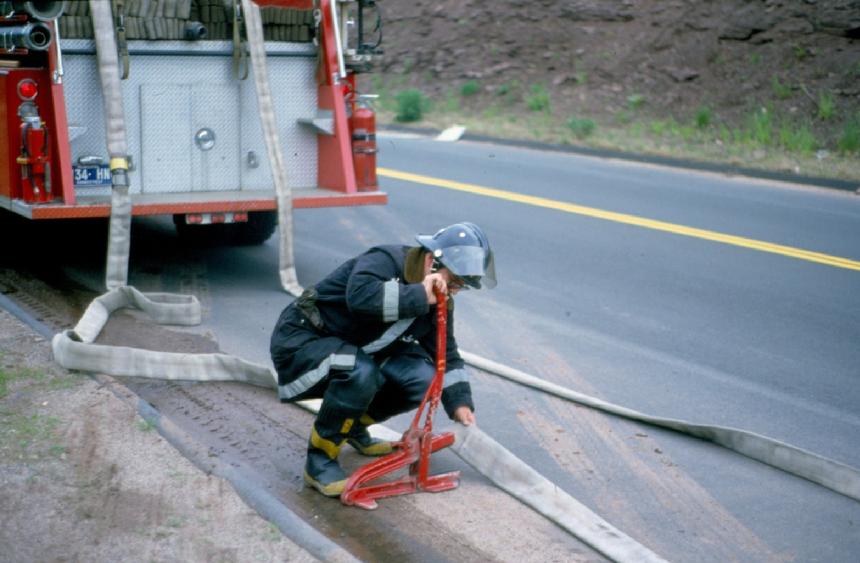 |
| . . . and clamps off the 3" supply line before the hydrant man can charge it. |
|
|
 |
| Meanwhile, the rider of the rescue, Ff. Howie Hurlburt, Jr., becomes the "hydrant man," connecting the 3" line to the port facing the direction of the lay. |
|
|
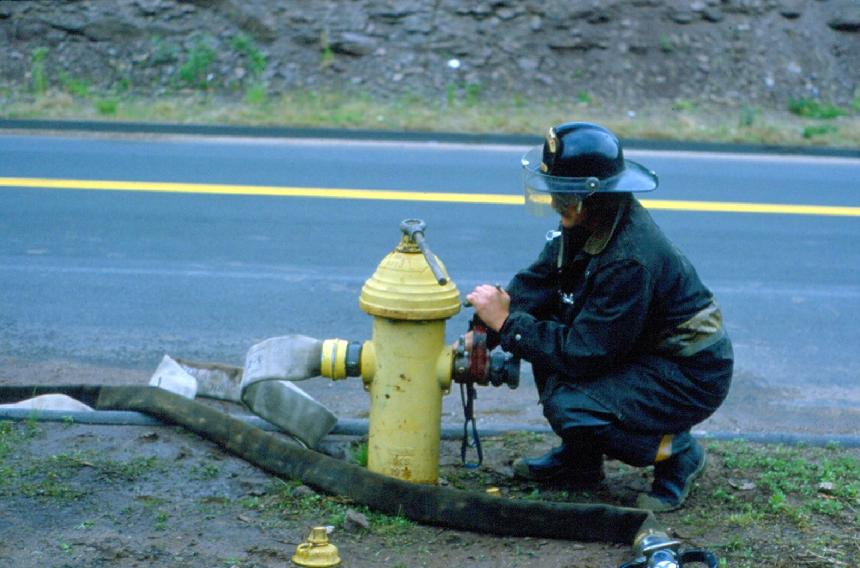 |
| A closed 2-1/2" hydrant gate is connected to opposite port. |
|
|
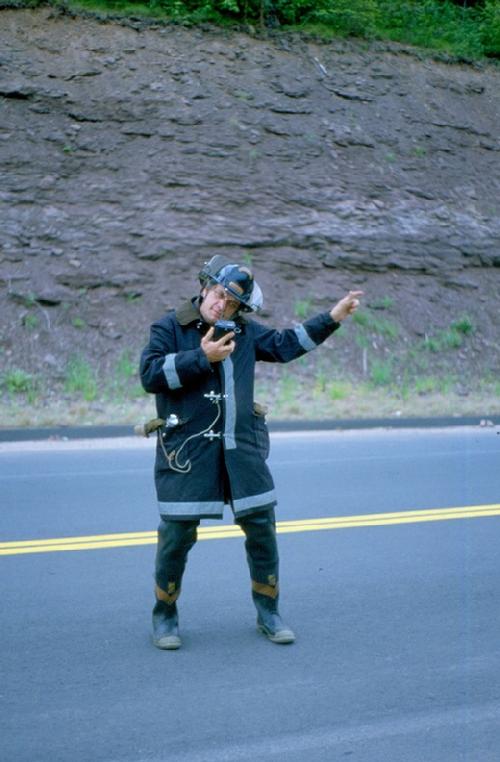 |
| Senior man Bob Kelo radios the hydrant man to charge the line. |
|
|
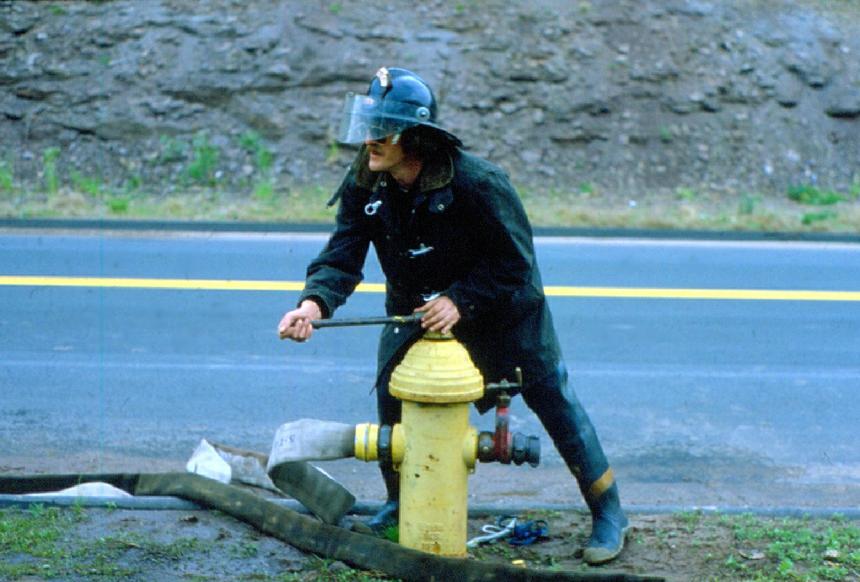 |
| Hydrant man charges the 3" supply line. He then connects the 2-1/2" line to the gate and proceeds to the fire scene. |
|
|
 |
| Pump operator disconnects clamped-off portion of the 3" line from bed, allowing enough extra line to reach intake port. |
|
|
 |
| Once 3" supply line is connected to pumper intake port, the pump operator releases the hose clamp on the charged 3" supply line. If additional volume is needed, the 2-1/2" line can be connected and the hydrant gate opened. |
|
|
 |
| Pump operator now has water. |
|
|
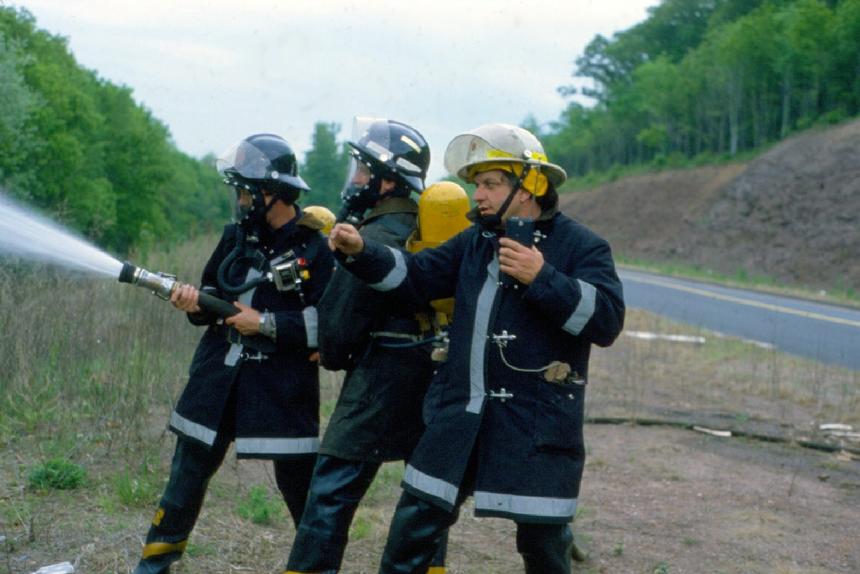 |
| Bob Kelo, acting as "Deputy Chief", directs the men on the line. (Bob will want everyone to know that this was Tram's idea!) |
|
|
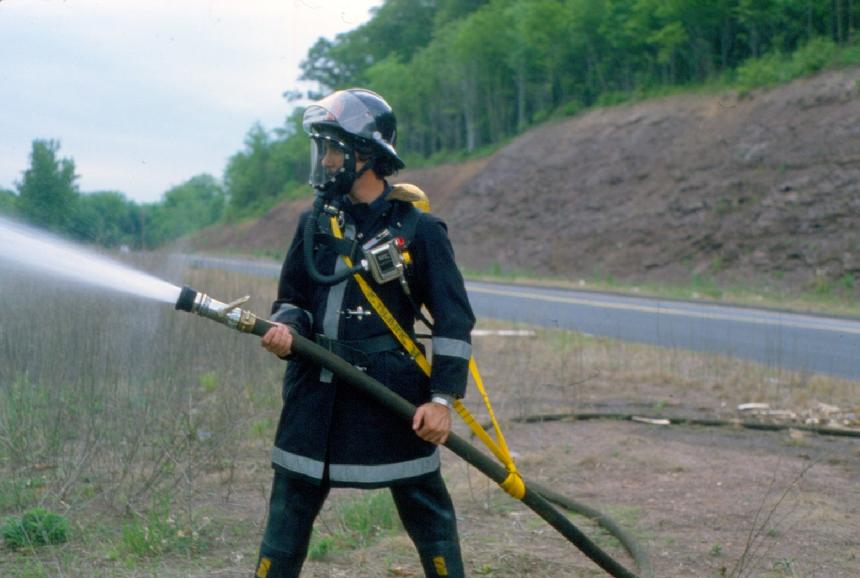 |
| About this time each officer and firefighter was issued a nylon strap that had many potential uses, including this one, as demonstrated by Ff. Bob Surprise. |
|
|
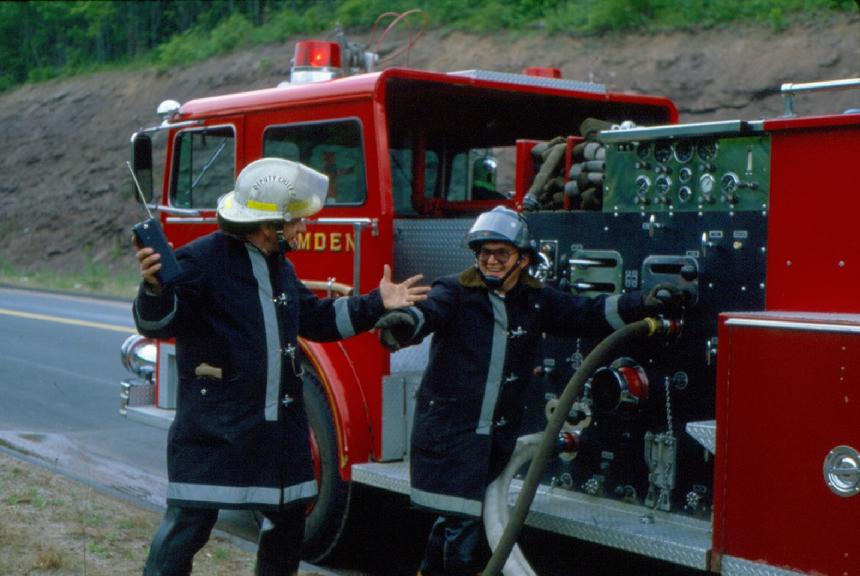 |
| 400 psi at the nozzle? "What the hell are you DOING?" (Kelo and Longo mugging it up for cameraman Tramontano) |
|
|
|